Car detailing plays a vital role in preserving a vehicle’s appearance and protecting its value. Beyond routine washing, car detailing involves a thorough cleaning and rejuvenation of both the interior and exterior surfaces. Unfortunately, the world of car detailing is plagued by numerous misconceptions and myths that can mislead car owners and prevent them from making informed decisions about their vehicle’s care.
In this article, we aim to debunk common car detailing myths and shed light on the truth behind them. By challenging these misconceptions, we hope to empower readers with accurate knowledge and enable them to make wise choices when it comes to maintaining their vehicles.
We will examine and dispel each of these myths one at a time, from the false notion that dish soap is appropriate for car washing to the false assumption that waxing is not necessary for modern automotive finishes. We’ll talk about how crucial it is to use the right equipment and methods, the advantages of clay bars and high-quality microfiber towels, and the value of adhering to manufacturer recommendations.
By separating fact from fiction, we seek to highlight the importance of car detailing for all types of vehicles, irrespective of their brand or model. Our mission is to arm readers with the knowledge they need to make wise choices and guarantee that their cars get the proper care.
Myth 1: Washing your car with dish soap is safe and effective
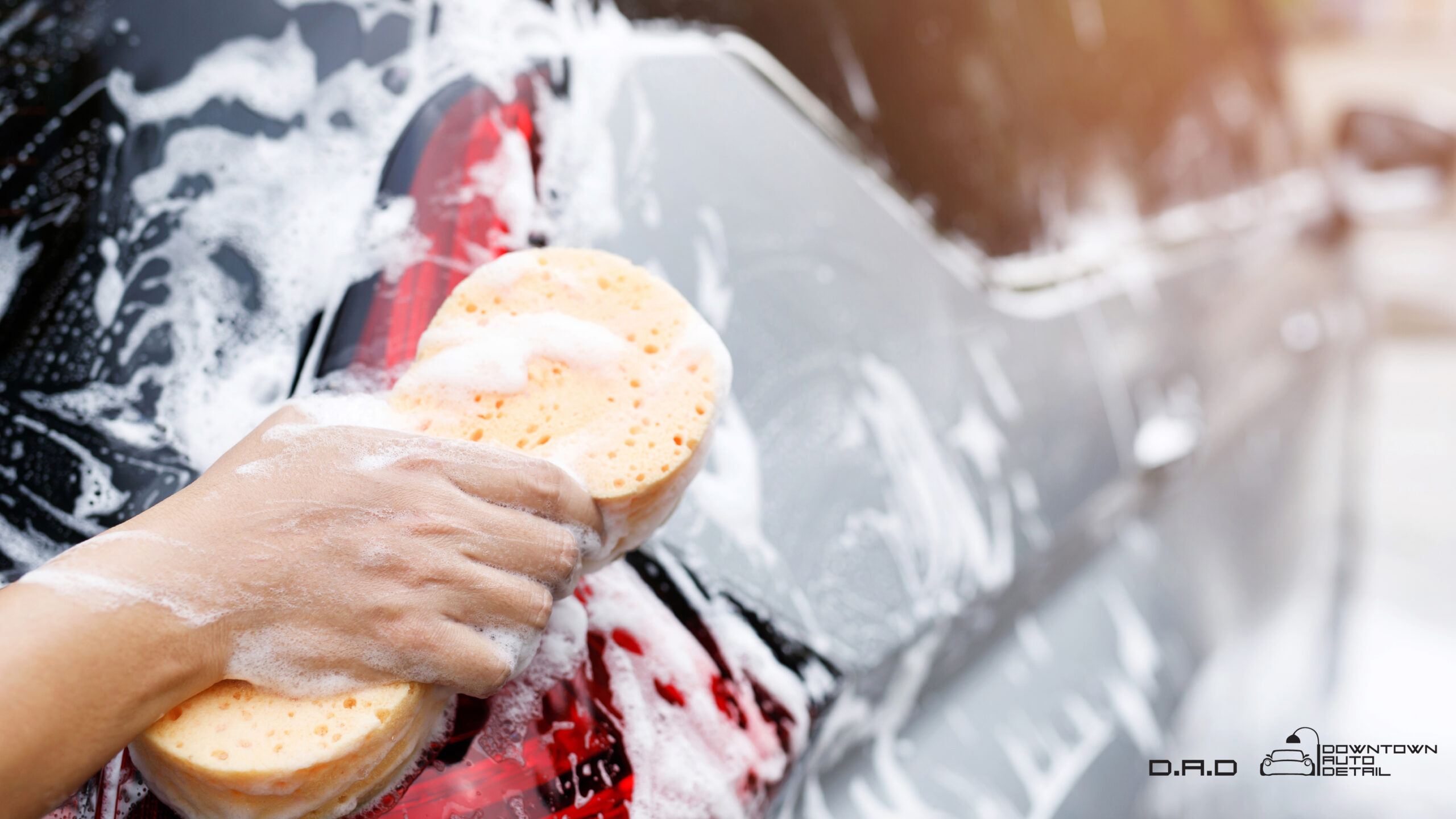
Contrary to popular belief, it is not safe or efficient to wash your automobile with dish soap. Dish soap can be too abrasive for your car’s delicate paint and protective coatings even if it is made to remove grease and grime from dishes.
Dish soap often has a pH level above 7, making it naturally alkaline. This high alkalinity can remove the wax and sealants from your car’s paint, making it more susceptible to harm from UV rays, pollutants, and environmental conditions. Dish soap could also have chemicals and perfumes that leave a residue on the paint, making it look foggy and dull.
To safely and effectively wash your car, it is recommended to use pH-balanced car wash solutions specifically formulated for automotive use. These car wash solutions are designed to gently remove dirt and grime without compromising the paint or protective coatings. They maintain the pH balance, ensuring the longevity of your car’s finish.
By using pH-balanced car wash solutions, you can keep your vehicle’s paintwork in optimal condition, preserve its shine, and protect it from premature aging. So, steer clear of dish soap and invest in quality automotive wash products for a safe and effective car wash routine.
Myth 2: Waxing is unnecessary with modern car finishes
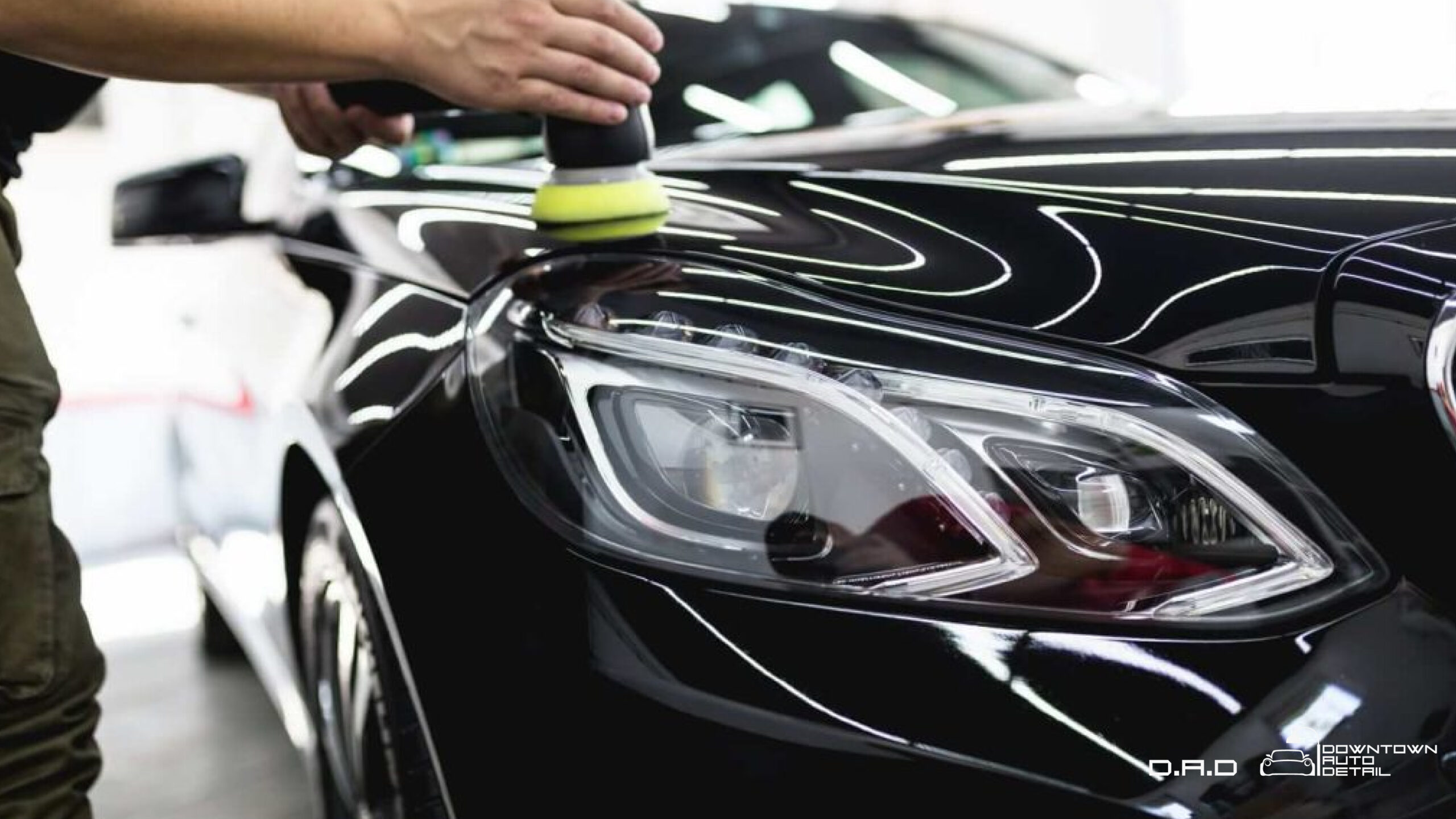
One common fallacy is that with today’s automobile finishes, waxing is no longer required. This fallacy, however, needs to be disproved because waxing is essential for shielding the paint of the car from a variety of external elements.
Beyond only improving the car’s appearance, waxing has several advantages. The first function of wax is to serve as a barrier of defense, guarding the paint against damaging factors including acid rain, oxidation, and UV rays. The paint is shielded against fading or deterioration over time thanks to this protection.
Additionally, waxing raises the gloss and sheen of the car’s exterior, giving it a polished and well-kept appearance. Furthermore, it encourages water beading, which causes raindrops to roll off the surface rather than stick to it. This reduces water spots and potential damage.
Moreover, waxing can provide an additional layer of defense against minor scratches and contaminants, acting as a sacrificial barrier that takes the brunt of the damage. Regular waxing ensures that the protective layer is replenished, maximizing its effectiveness in safeguarding the paint.
In conclusion, waxing remains a valuable step in car detailing, even with modern car finishes. Its ability to enhance gloss, repel water, and provide a protective barrier is essential for maintaining the long-term appearance and value of a vehicle.
Myth 3: Clay bars are only for professional detailers
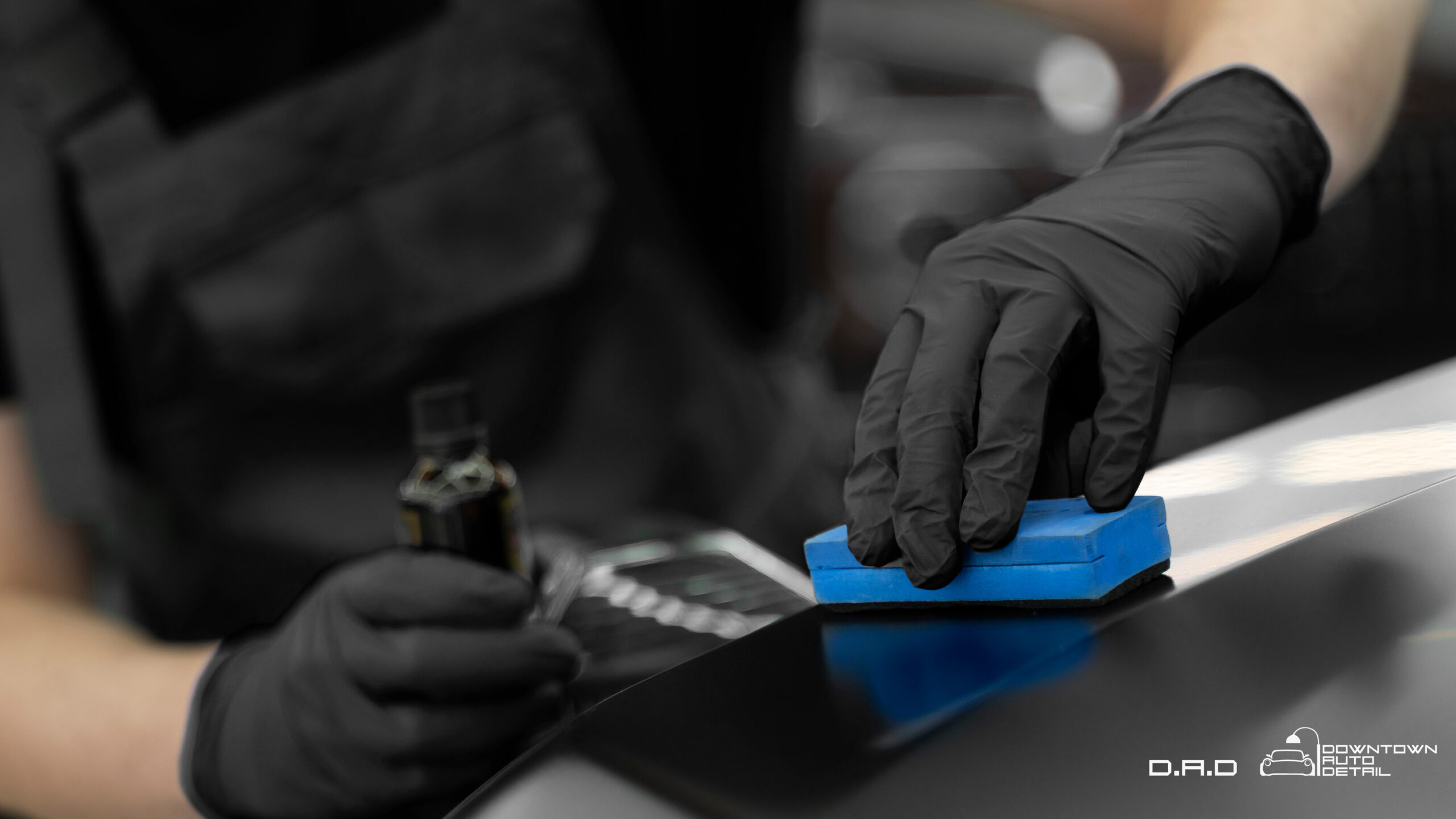
Contrary to popular belief, clay bars are not exclusively meant for professional detailers. They are highly beneficial for car owners who wish to maintain the appearance and longevity of their vehicles. Clay bars are a vital tool in removing embedded contaminants from the paint that ordinary washing cannot eliminate.
These contaminants, such as industrial fallout, brake dust, tree sap, and road grime, can adhere to the vehicle’s paint surface over time. They not only affect the car’s aesthetics but also degrade the paintwork if left untreated. This is where clay bars shine. They work by gently gliding over the paint, picking up and trapping contaminants in their clay-like texture.
By using a clay bar regularly as part of your car detailing routine, you can effectively remove these contaminants, restoring smoothness and shine to the paintwork. It is a simple yet powerful technique that enhances the effectiveness of other detailing steps, such as polishing and waxing.
Don’t be intimidated by the idea that clay bars are reserved for professionals. They are readily available in automotive stores and are easy to use. Just remember to lubricate the surface adequately with a clay bar lubricant to prevent any marring or scratching of the paint. Embrace the benefits of clay bars as a regular part of your car detailing maintenance, and you’ll enjoy a cleaner, smoother, and more visually appealing vehicle.
Myth 4: Polishing is the same as waxing
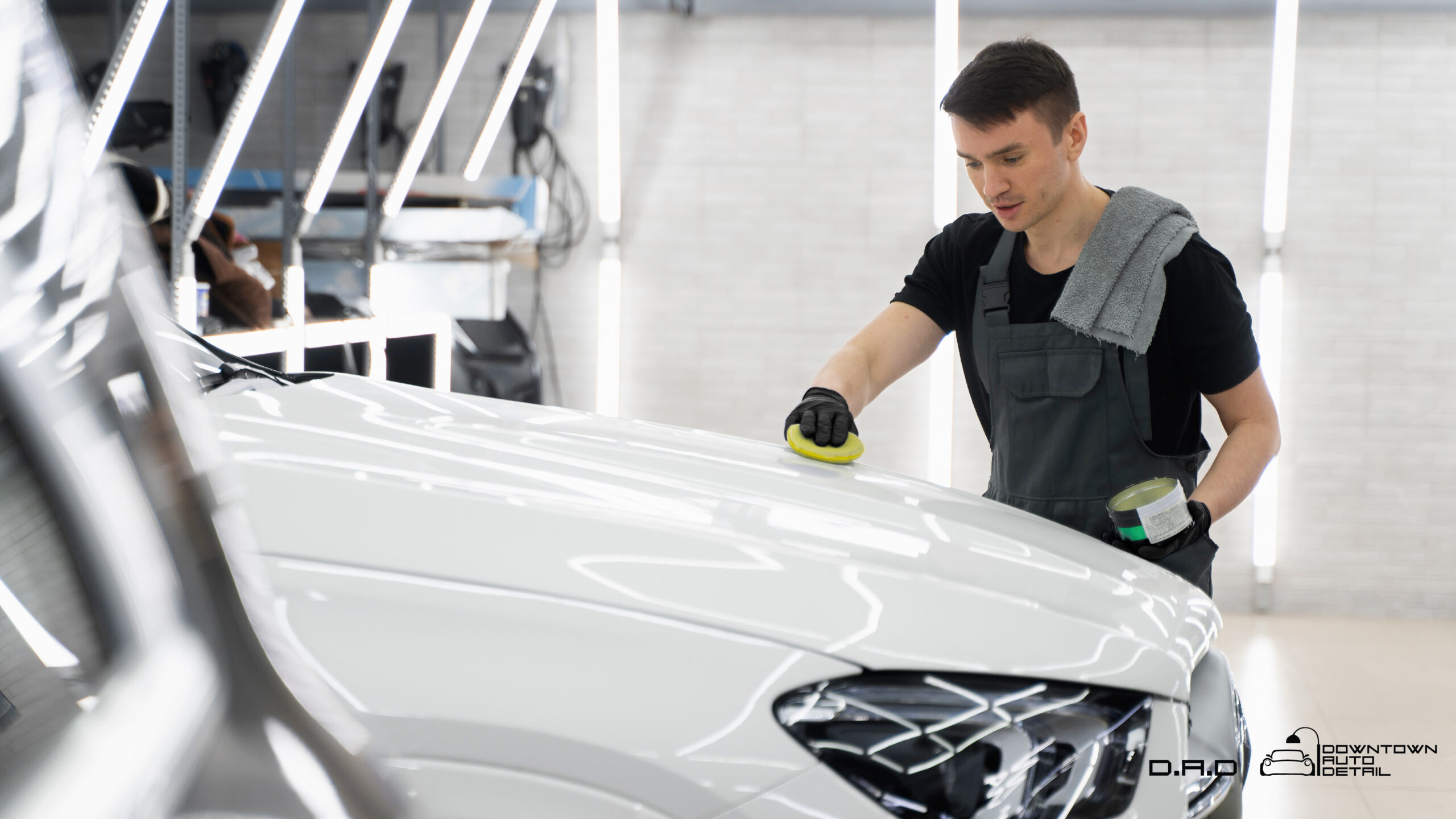
One common misconception in car detailing is that polishing and waxing are interchangeable terms or processes. However, it’s important to understand that polishing and waxing serve distinct purposes and follow different procedures.
Polishing is primarily aimed at correcting paint imperfections. It involves the use of abrasive compounds or polishes to remove fine scratches, swirl marks, oxidation, and other surface defects. Polishing helps restore the paint’s clarity and smoothness, providing a clean and glossy finish. It is typically done before waxing or sealing to prepare the surface for better product adhesion.
On the other hand, waxing focuses on protection and enhancement. Wax is applied to the paintwork as a protective layer. It forms a barrier against environmental contaminants, UV rays, and moisture, thereby preventing damage and fading. Additionally, waxing enhances the vehicle’s appearance by adding depth, shine, and a smooth texture to the paint surface.
To summarize, while polishing is about correcting imperfections, waxing is about adding protection and enhancing the overall look. Both processes play complementary roles in car detailing, with polishing serving as a preparatory step and waxing as a protective and aesthetic measure. Understanding this distinction is crucial for achieving optimal results and maintaining the beauty and value of your vehicle.
Myth 5: All microfiber towels are created equal
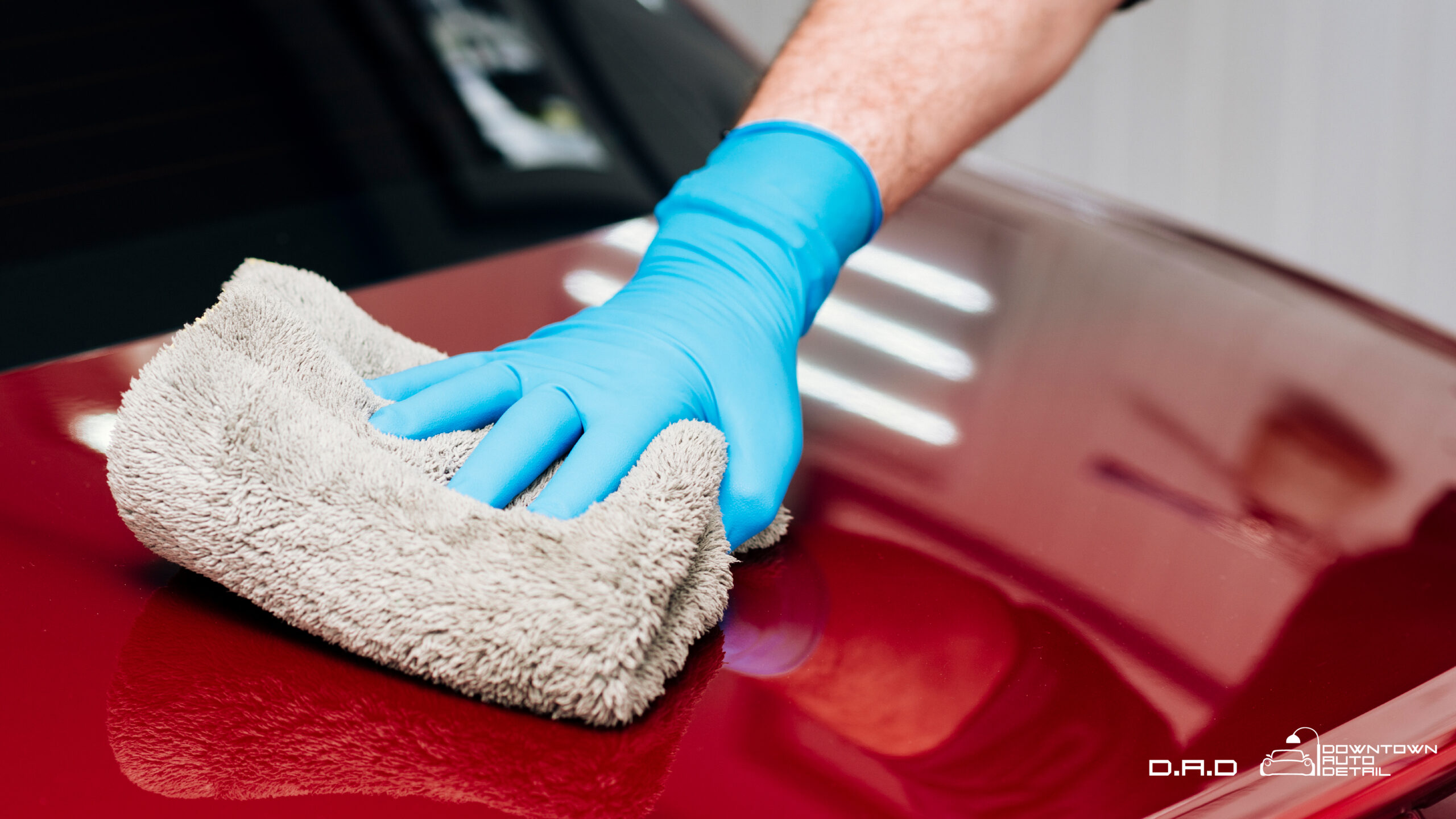
One common misconception in car detailing is the belief that all microfiber towels are the same. However, it’s crucial to understand the importance of using high-quality microfiber towels for an effective and safe cleaning experience.
Low-quality microfiber towels can be problematic during car detailing. These towels often have rough or poorly woven fibers that can scratch the vehicle’s paint surface. When used for wiping or buffing, they can leave behind fine scratches, swirl marks, or even lint residue, diminishing the overall appearance of the car.
On the other hand, high-quality microfiber towels are specifically designed for car detailing purposes. They are made with fine, densely packed fibers that are gentle on the paintwork while effectively capturing dirt, dust, and contaminants. Quality towels have superior absorbency and softness, ensuring a streak-free finish without causing any damage to the paint.
Investing in good microfiber towels is essential for maintaining the integrity of the vehicle’s finish. When choosing microfiber towels, opt for those specifically labeled for automotive use, preferably with a high GSM (grams per square meter) rating, as this indicates thickness and absorbency.
Remember, using high-quality microfiber towels ensures a safe and effective cleaning process, reducing the risk of scratches, swirl marks, and lint residue. They are a worthwhile investment that contributes to preserving the vehicle’s appearance and achieving professional-grade results in car detailing.
Myth 6: Applying more wax or sealant provides better protection
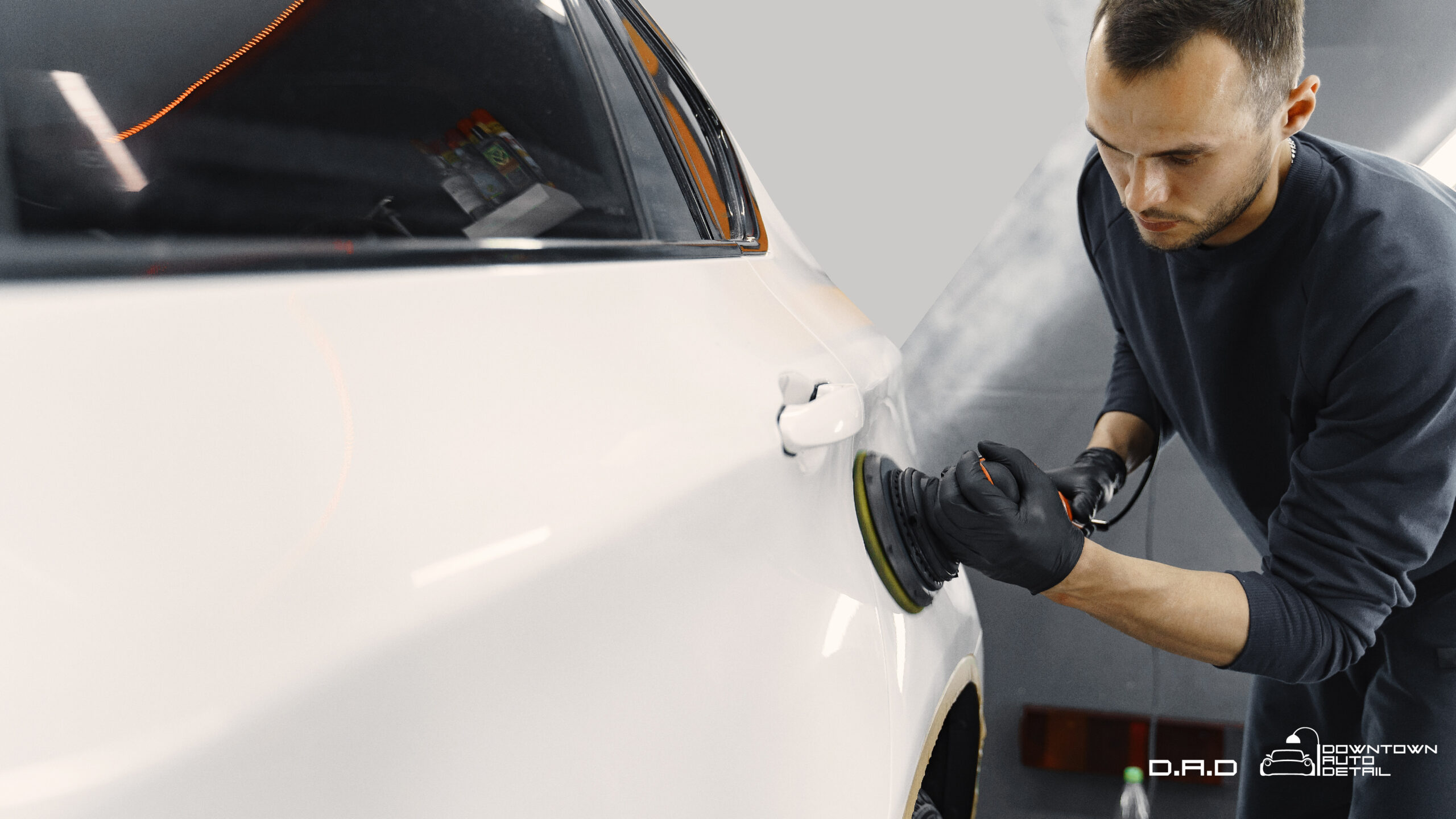
It’s a frequent fallacy that coating a car with too much wax or sealer will provide it with better protection and extend its lifespan. The reality, however, is quite the contrary. More wax or sealant than is advised does not improve the protective qualities; on the contrary, it might cause product accumulation and other problems.
Wax or sealant products are designed to produce a homogeneous, thin layer that protects against UV radiation, pollutants, and environmental deterioration on the surface of the car. In addition to wasting product, applying too much can result in uneven coverage and make it challenging to get a smooth finish.
Moreover, excessive wax or sealant can result in product buildup, leaving a sticky residue that attracts dirt and grime, ultimately detracting from the appearance of the vehicle. This buildup can also be challenging to remove and may require additional detailing efforts.
To ensure optimal protection and results, it is essential to follow the manufacturer’s recommended application instructions. These instructions consider factors such as the product’s specific formulation, intended usage, and the appropriate quantity for effective coverage. Adhering to these guidelines ensures that the wax or sealant is applied correctly, providing the intended level of protection without any adverse effects.
Remember, more is not always better when it comes to wax or sealant application. Stick to the recommended amounts to achieve the best results and maintain your vehicle’s appearance effectively.
Myth 7: Detailing can be done quickly without proper tools and techniques
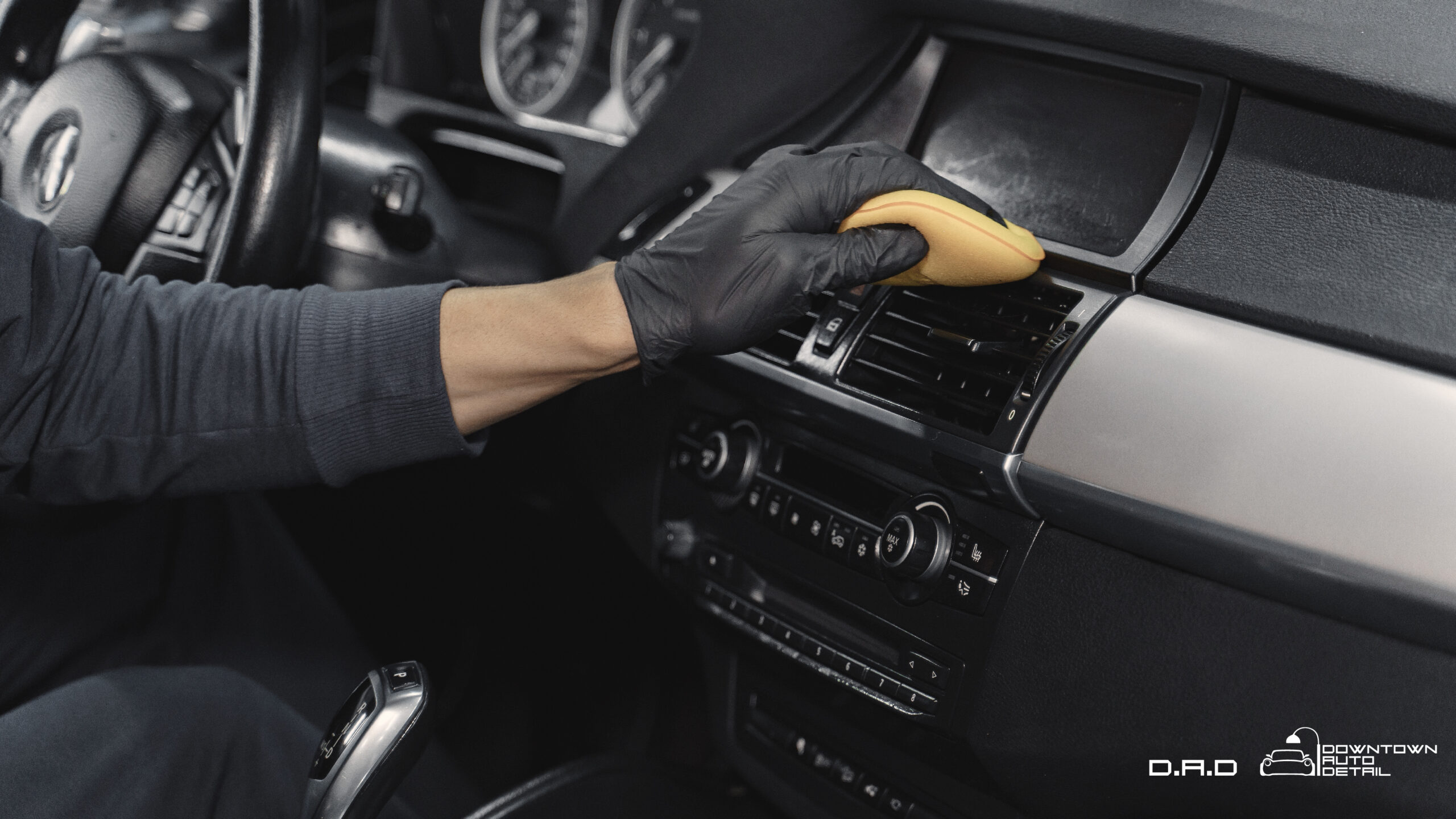
One misunderstanding regarding automobile detailing is that it can be completed fast and efficiently without the use of the right equipment and methods. But nothing could be further from the truth than this. To obtain the intended results, effective car detailing needs the appropriate tools, supplies, and techniques.
A good detailing process depends on purchasing high-quality equipment. Towels, applicators, brushes, and polishing equipment made of premium microfiber can significantly alter the effect. These products are made to be gentle on surfaces while eliminating pollutants, filth, and grime.
Moreover, using the correct detailing products is crucial. Different surfaces require specific cleaners, polishes, and protectants to ensure optimal results. Using subpar or incorrect products can lead to poor cleaning performance or, in the worst cases, damage to the vehicle’s surfaces.
To truly master car detailing, educating oneself on proper techniques is essential.
Understanding the correct order of operations, such as washing, claying, polishing, and waxing, as well as the appropriate application methods, will yield superior results.
In conclusion, don’t fall for the misconception that car detailing can be done quickly and effortlessly without the right tools and techniques. Investing in quality equipment, using appropriate products, and educating oneself on proper detailing methods will ensure a satisfying and long-lasting outcome for your vehicle.
Myth 8: Car detailing is only for luxury or shows cars

Contrary to popular belief, car detailing is not limited to luxury or show cars; it offers significant benefits to all vehicles, regardless of their make, model, or value. Regular detailing plays a crucial role in extending the lifespan of a vehicle’s exterior and interior surfaces.
First and foremost, detailing helps protect the paintwork from the harmful effects of environmental factors. Whether it’s UV rays, dirt, road grime, or pollutants, these elements can gradually deteriorate the vehicle’s paint if left unchecked. Detailing involves a thorough cleaning, polishing, and applying protective coatings like wax or sealants, creating a barrier that shields the paint from such damage.
Moreover, interior detailing ensures the longevity and cleanliness of the vehicle’s cabin. Dust, dirt, spills, and UV exposure can take a toll on upholstery, dashboard, and other surfaces. Regular cleaning, vacuuming, and conditioning of the interior components not only enhance the aesthetics but also prevent premature wear and tear.
Regardless of whether it’s a budget-friendly commuter car or a high-end luxury vehicle, every car benefits from detailing. By investing in routine detailing, owners can maintain their appearance, protect their investments, and enjoy a fresh and clean driving experience. Don’t let the misconception of car detailing being exclusive to luxury or show cars prevent you from reaping the rewards of a well-maintained vehicle.
Myth 9: Using more pressure while washing will clean your car more thoroughly
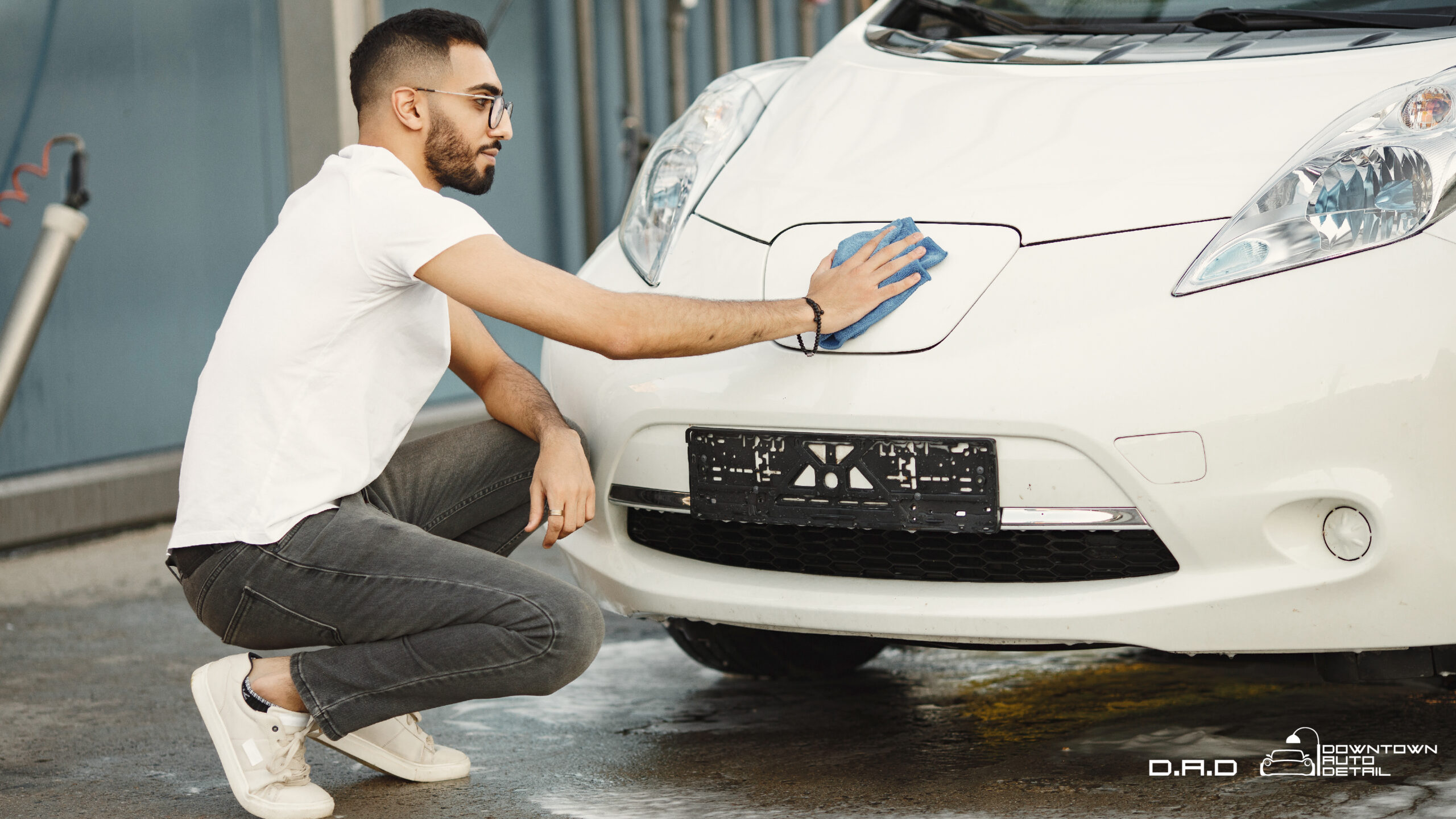
It is a common misconception that applying more pressure while washing your car will result in a more thorough cleaning. However, this myth is not entirely accurate and can lead to potential damage to your vehicle’s paintwork.
Using excessive pressure, such as high-pressure washers or forcefully scrubbing with a brush, can actually harm your car’s paint, causing scratches, swirl marks, and even stripping off the protective wax or sealant layer. Additionally, high-pressure water can penetrate through seals and gaskets, leading to water damage in sensitive areas.
The key to effectively cleaning your car is not about using brute force but employing the right techniques and using appropriate tools. A gentle touch combined with a quality car wash shampoo, microfiber mitts or towels, and proper washing techniques, like the two-bucket method, can provide a thorough and safe cleaning.
Remember, it’s crucial to strike a balance between removing dirt and grime while preserving your car’s paint. Gentle and meticulous cleaning methods are always recommended over excessive pressure to maintain the appearance and integrity of your vehicle’s exterior.
Conclusion
In conclusion, we have debunked eight common myths surrounding car detailing, aiming to provide you with accurate information and help you make informed decisions. It is crucial to rely on reliable sources when it comes to maintaining your vehicle’s appearance and value.
First, using dish soap for car washing is a misconception that can harm your vehicle’s paint and protective coatings. Instead, opt for pH-balanced car wash solutions designed specifically for automotive use. Additionally, waxing is not obsolete, as it plays a vital role in protecting your paint from environmental factors and enhancing its appearance.
Furthermore, clay bars are not exclusive to professional detailers. They are essential for removing embedded contaminants from your vehicle’s paint, making them suitable for regular maintenance. Polishing and waxing are distinct processes with different objectives: polishing corrects imperfections, while waxing provides protection and enhancement.
Remember, not all microfiber towels are created equal. Low-quality towels can leave scratches and lint, so invest in high-quality ones for a safe and effective cleaning experience. Applying excessive amounts of wax or sealant does not provide better protection and can lead to product buildup, so follow the manufacturer’s recommendations.
Lastly, car detailing is not only for luxury or show cars. It benefits all vehicles by extending their exterior and interior surfaces’ life. By adopting proper car detailing practices, you can maintain your vehicle’s appearance and value for the long term.
FAQ's
No, using dish soap is not recommended for car washing. It can strip away protective coatings and damage the paint. Opt for pH-balanced car wash solutions specifically formulated for automotive use.
No, clay bars are suitable for all car owners. They help remove embedded contaminants from the paint, enhancing its smoothness and preparing it for polishing and waxing.
No, polishing and waxing serve different purposes. Polishing is aimed at correcting paint imperfections, while waxing provides protection and enhances gloss. Both are important steps in car detailing.
No, quality matters when it comes to microfiber towels. Low-quality towels can leave scratches and lint behind. Invest in high-quality, lint-free microfiber towels for safe and effective car detailing.
No, applying excessive amounts of wax or sealant does not enhance protection. Follow the manufacturer's instructions for proper application to ensure optimal results without product buildup.
No, car detailing benefits all vehicles, regardless of their make or model. It helps maintain the appearance and value of the vehicle by protecting the exterior and interior surfaces from wear and tear.


This is my first time pay a quick visit at here and i am really happy to read everthing at one place